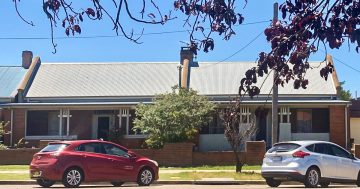
Goulburn and Marulan will accommodate 3500 new homes by 2036. Photo: Visit NSW.
How do city planners prepare for a growing population? The simple answer is they build – more houses, roads, green space and public amenities. But should they build up to avoid sprawl or outwards to save skylines?
Goulburn Mulwaree Council has been asking itself that question for the past two years after realising its city and the nearby town of Marulan would need to accommodate about 3500 new dwellings to house an additional 5000 to 7000 people in the next 15 years.
In that time, council consulted with the community to create an Urban and Fringe Housing Strategy that identifies areas suitable for the new homes and was endorsed by the NSW Department of Planning in late November 2020.
The majority of the new homes, 3045, will be built in Goulburn, predominantly in the north around Marys Mount – an area popular with families with a minimum lot size of 700 square metres – with some housing growth to continue to the west of Goulburn. Marulan will increase by 355 homes, while the remaining 100 will accommodate for rural blocks in both areas.
The strategy identifies land to build the 3500 homes, and more for the future including 1704 in the Run-O-Waters suburb, 1453 in Middle Arm, 326 in Kenmore, 259 in Sooley, 111 in Bradfordville, 132 in Brisbane Grove, 164 in Mountain Ash, 30 on Gorman Road, and 26 at Mount Gray.
In Marulan, 694 dwellings will be built in the town’s north, and 29 will be built in the town’s east.

Overlay map of a proposed inner-city subdivision in Goulburn which shows large blocks and access off Hovell Street. Image: LandTeam Australia.
Overall, the strategy indicates the centre of Goulburn will accommodate the smallest dwellings – terrace houses and units – which means buildings will go up, while the city’s outskirts and Marulan will sprawl to accommodate larger houses for families.
There is already a growing trend of people willing to sacrifice large block sizes for more compact living closer to the city centre, and council needs to consider its ageing population, with people aged 70 and above expected to represent the majority of those who will move to the area between 2018 and 2036.
There will also be a high number of singles, and couples living without children. The good news is smaller housing that is appropriate for an ageing population can also be appropriate for residents seeking affordable and efficient living options.
The family-friendly areas of Marulan and the north of Goulburn will continue to provide larger block sizes with more bedrooms.
Between 2009 and 2017, 583 lots were already approved at Marys Mount in the north of Goulburn, proving its popularity as a growing suburb.
So during the next 15 years, Goulburn and Marulan combined will see 195 dwellings under construction per year.
Goulburn Mulwaree Council staff are extremely busy assessing development applications for new dwellings. Between 30 November and 4 December this year alone, nine dwellings were approved.
Some people may be surprised to know the city has been growing close to that for the past 10 years, with 1303 dwellings approved between 2007 and 2017, which is about 130 per year.
As for what is driving the population growth, council believes it comes down to affordable housing – the average house price in the region is $335,000 and the average rental is $245 per week – and Goulburn and Marulan’s easy access to Sydney (two hours away) and Canberra (one hour away).
And more people will move if transport to the city, such as a high-speed rail, is improved in future years.
Goulburn Mulwaree Council Mayor Bob Kirk said the strategy is the culmination of a huge amount of work in planning for the future.
“It was an enormous task to look at our city with a blank map and begin to plan where the growth will continue for the next 15 to 20 years,” he said. “Key considerations for us were the provision of infrastructures such as roads, water and sewerage, but also ensuring we can provide green space and a high standard of public amenities. The council will now be able to undertake further master planning for this infrastructure.”
Original Article published by Hannah Sparks on About Regional.

















